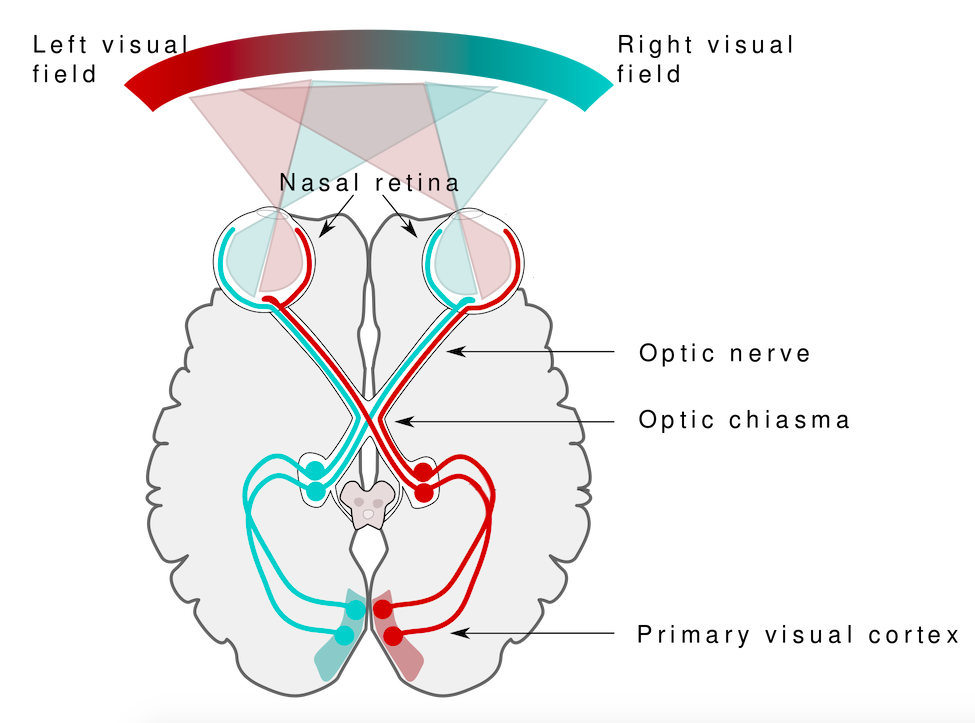Blindsight
What do you think would happen if your occipital lobes were damaged? Back in the 1970s, most scientists and physicians would have said, “You would become blind.” It turns out that the answer is more complicated than that.
Unconscious Sight?
When he was 8 years old, Graham Young from Oxford, England, was injured in a bicycle accident. Afterward, he reported that parts of his vision were gone. He told his doctors that he could no longer see anything to the right of his center of vision with either his left or right eye. The left side of his visual field in both eyes was normal. Although he said that he would sometimes walk into objects to his right because he couldn’t see them, when tested fifteen years later, an optician discovered that Mr. Young seemed to respond to visual movements in his “blind” area.

Graham Young was put into contact with psychologists Larry Weiskrantz and Elizabeth Warrington, who had worked previously with a person (known as DB) who seemed to have a similar ability to see despite blindness. DB could report shapes, colors, movement, and the orientation of objects despite claiming that he could see nothing. He said that he was guessing, but he was usually right about colors and shapes, and other characteristics of the objects.
blindsight
Blindsight refers to a phenomenon in which individuals who are blind in a particular area of their visual field, due to damage to the primary visual cortex, are still able to respond to visual stimuli in that area without consciously perceiving them.
Before we go on, please take a moment to theorize about what might be going on with Graham Young and DB.
People with blindsight have been tested for their ability to detect color differences, brightness changes, discriminate between various shapes, as well as track movement. Critically, people with blindsight have the conscious experience of blindness, often feeling like they are guessing on visual tasks despite their high level of accuracy.
Blindsight in Action
Here is a brief video of a man who experiences complete blindness because his visual cortex in both hemispheres has been damaged. The researchers (including Dr. Weiskrantz, mentioned above) set up an obstacle course for the man (whose face is blurred to protect his privacy). Watch how well he moves around the objects without help. (The man behind him is there as a safety precaution.)
You can access the text alternative for “TN Blindsight” here (opens in new window).—